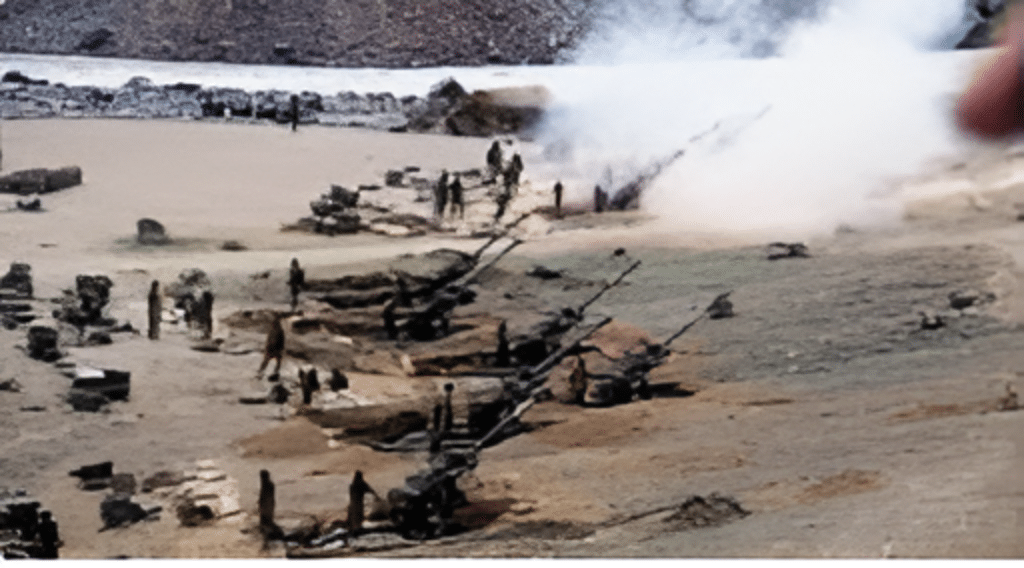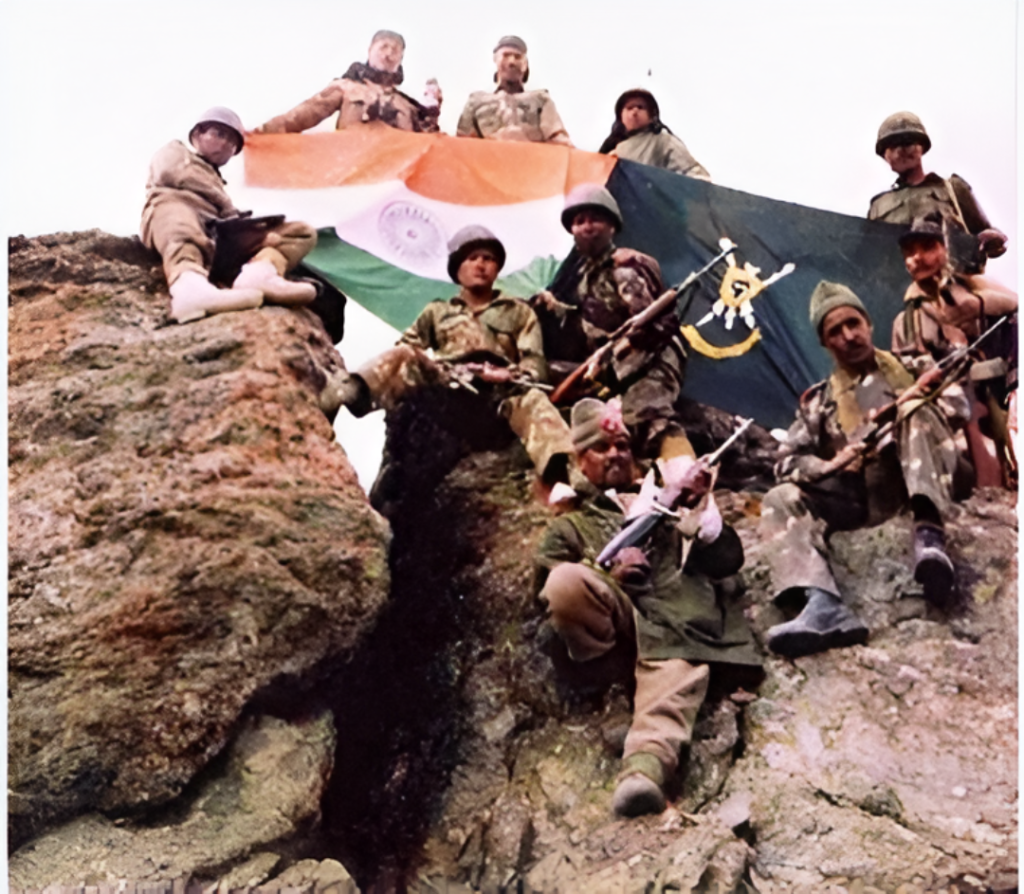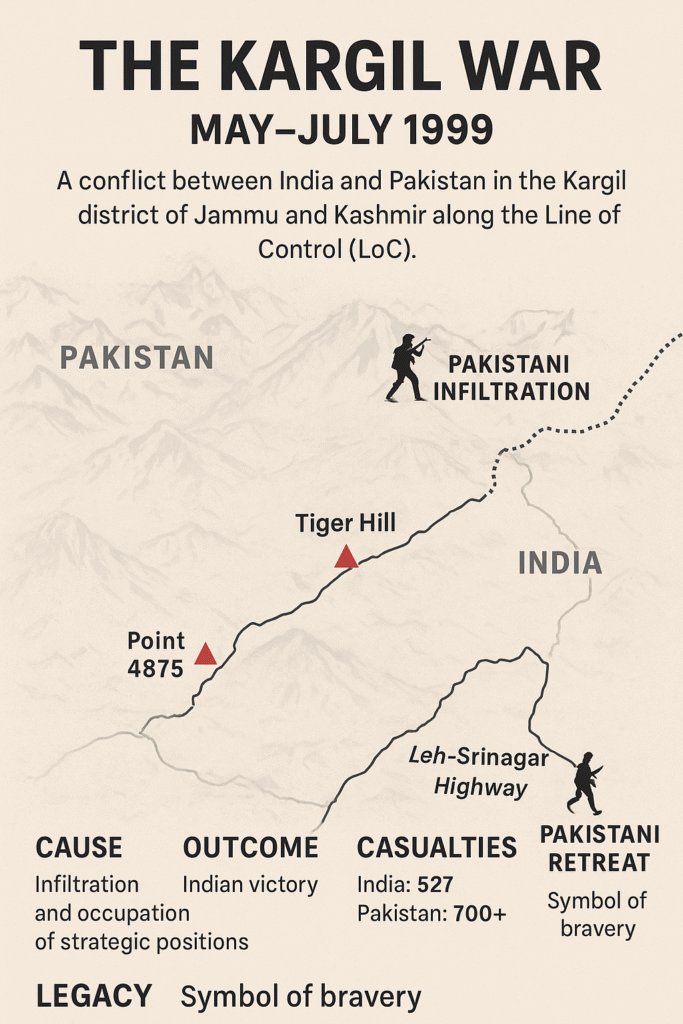From May to July 1999, the icy heights of the Kargil district in Jammu and Kashmir became the stage for one of the most intense mountain conflicts in modern history — the Kargil War. It unfolded along the Line of Control (LoC), the de facto border between India and Pakistan, and would push soldiers on both sides to their limits.
The Spark
The war began when Pakistani soldiers, disguised as militants, along with armed insurgents, crossed the LoC and quietly took control of strategic mountain peaks and ridges deep inside Indian territory. Their primary objective was to dominate the Leh–Srinagar highway, the lifeline for Indian forces in the region. If successful, they could choke supply lines, isolate Indian troops in Ladakh, and alter the balance of control in Kashmir.
A Harsh Battlefield
The terrain was unforgiving — jagged peaks towering above 16,000 feet, thin oxygen that made every breath a struggle, and winds that could freeze exposed skin in minutes. The infiltrators were positioned on high ridgelines, forcing Indian troops to fight uphill in the open, often under direct enemy fire. Helicopters struggled in the thin air, and soldiers carried weapons, ammunition, and gear on foot along sheer cliffs.
India Strikes Back
When the infiltration was discovered in May 1999, the Indian Army launched Operation Vijay to reclaim the captured heights. Battalions climbed night after night, often crawling for hours to avoid detection. The Indian Air Force joined the offensive under Operation Safed Sagar, using fighter jets and helicopters to target enemy bunkers in extreme high-altitude conditions.

Turning the Tide
The battles of Tololing, Tiger Hill, and Point 4875 became defining moments. Victory often came at a heavy price — soldiers advancing against machine gun nests and artillery shells in terrain where even walking was a challenge. Yet, determination and meticulous coordination slowly tilted the fight in India’s favor.
By mid-July, Indian troops had recaptured most of the positions. International pressure, especially from the United States, mounted on Pakistan to withdraw. By the end of the month, the infiltrators had retreated across the LoC.

The Cost of Victory
The war claimed over 500 Indian lives and more than 700 Pakistani lives, though numbers vary. Many soldiers became household names for their heroism — Captain Vikram Batra, Lieutenant Manoj Kumar Pandey, and others whose courage became legends.

Legacy
The Kargil War was a stark reminder of the need for vigilance along the LoC, even during peace talks. For India, it became a symbol of bravery and sacrifice. Every year, on July 26 — Kargil Vijay Diwas — the nation remembers the soldiers who fought against overwhelming odds in a war fought on the roof of the world.

